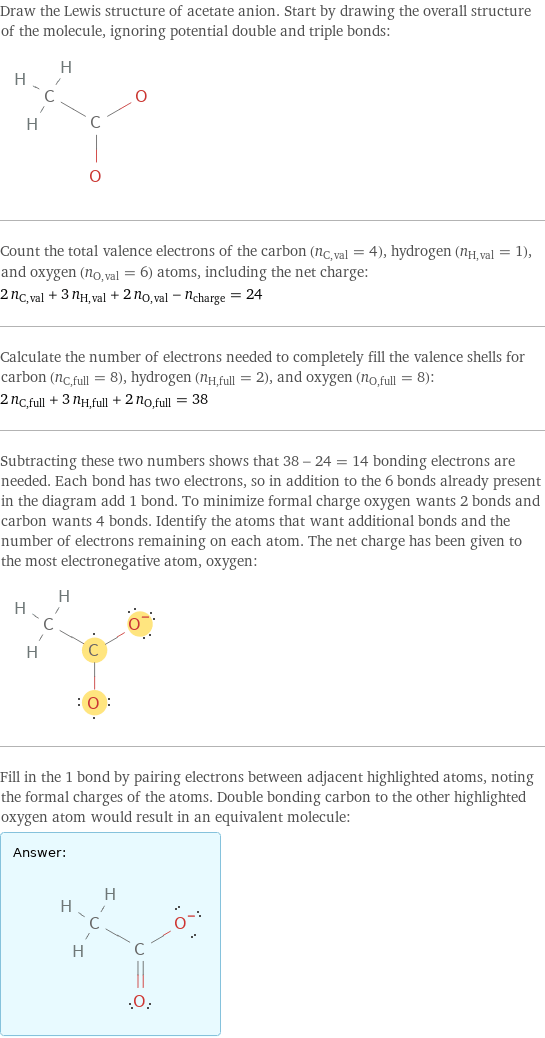Input interpretation

acetate anion
Lewis structure

Draw the Lewis structure of acetate anion. Start by drawing the overall structure of the molecule, ignoring potential double and triple bonds: Count the total valence electrons of the carbon (n_C, val = 4), hydrogen (n_H, val = 1), and oxygen (n_O, val = 6) atoms, including the net charge: 2 n_C, val + 3 n_H, val + 2 n_O, val - n_charge = 24 Calculate the number of electrons needed to completely fill the valence shells for carbon (n_C, full = 8), hydrogen (n_H, full = 2), and oxygen (n_O, full = 8): 2 n_C, full + 3 n_H, full + 2 n_O, full = 38 Subtracting these two numbers shows that 38 - 24 = 14 bonding electrons are needed. Each bond has two electrons, so in addition to the 6 bonds already present in the diagram add 1 bond. To minimize formal charge oxygen wants 2 bonds and carbon wants 4 bonds. Identify the atoms that want additional bonds and the number of electrons remaining on each atom. The net charge has been given to the most electronegative atom, oxygen: Fill in the 1 bond by pairing electrons between adjacent highlighted atoms, noting the formal charges of the atoms. Double bonding carbon to the other highlighted oxygen atom would result in an equivalent molecule: Answer: | |
General properties

formula | (CH_3CO_2)^- net ionic charge | -1 alternate names | ethanoate | acetate | acetate(1-)
Ionic radius

thermochemical radius | 162 pm
Units

Other properties

ion class | anions | carboxylate ions | ionic conjugate bases | oxoanions | polyatomic ions common sources of ion | tin(IV) acetate (4 eq) | stannous acetate (2 eq) | tetramethylammonium acetate (1 eq) | tetrabutylammonium acetate (1 eq) | strontium acetate (2 eq) | sodium diacetate (1 eq)